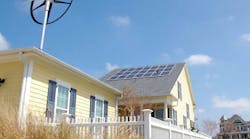Since I have been discussing microgrids in this month’s feature article, I thought it would be appropriate to look at the microgrid’s history. A microgrid is a mini-version of the electric grid, which fits the “micro” notion, but the origins of the word have been lost in history. According to Pike Research, the first “modern industrial microgrid in the United States was a 64 MW facility constructed in 1955 at the Whitling Refinery in Indiana,” but most people are not aware the concept is much older.
The microgrid concept dates back to the beginning of our industry. In 1882 when Thomas Edison opened his Pearl Street Station there was no standard for a generation-distribution system for electricity, so he designed as he went along. Amazingly, Edison’s Manhattan Pearl Street Station met all of today’s criteria for what is today’s microgrid system. It was self-contained and powered by coal fired steam engines that drove six jumbo generators. Each of his generators produced 1,100 kW DC.
As with most microgrids, Edison’s electric system was small with localized generation and a limited distribution network. It only served a few blocks in any direction because of the restrictions of the DC transmission network, which fits today’s definition of a microgrid. Interestingly, it also included batteries to provide energy storage. Microgrids with energy storage is a very hot topic today, so once again Edison was thinking ahead. His system also supplied heat from its steam generation to buildings around its facilities. Today we call this combined heat and power - CHP. Once again Edison’s ideas were spot on. CHP has proven to be very valuable.
Even though modern microgrids have been part of the grid for many years most of us had not heard of a microgrid until Superstorm Sandy hit the United States in 2012. The northeastern part of the U.S. including New York City lost electrical power for many weeks, but many customers noticed not everyone lost power. Lights were on in some buildings in New York, New Jersey and Connecticut because they had microgrids or distributed generation. This got a lot of attention from the politicians in charge because of their constituents. As a result, microgrids were included in the rebuild of the power grid in this area and as they say, the rest is history.


